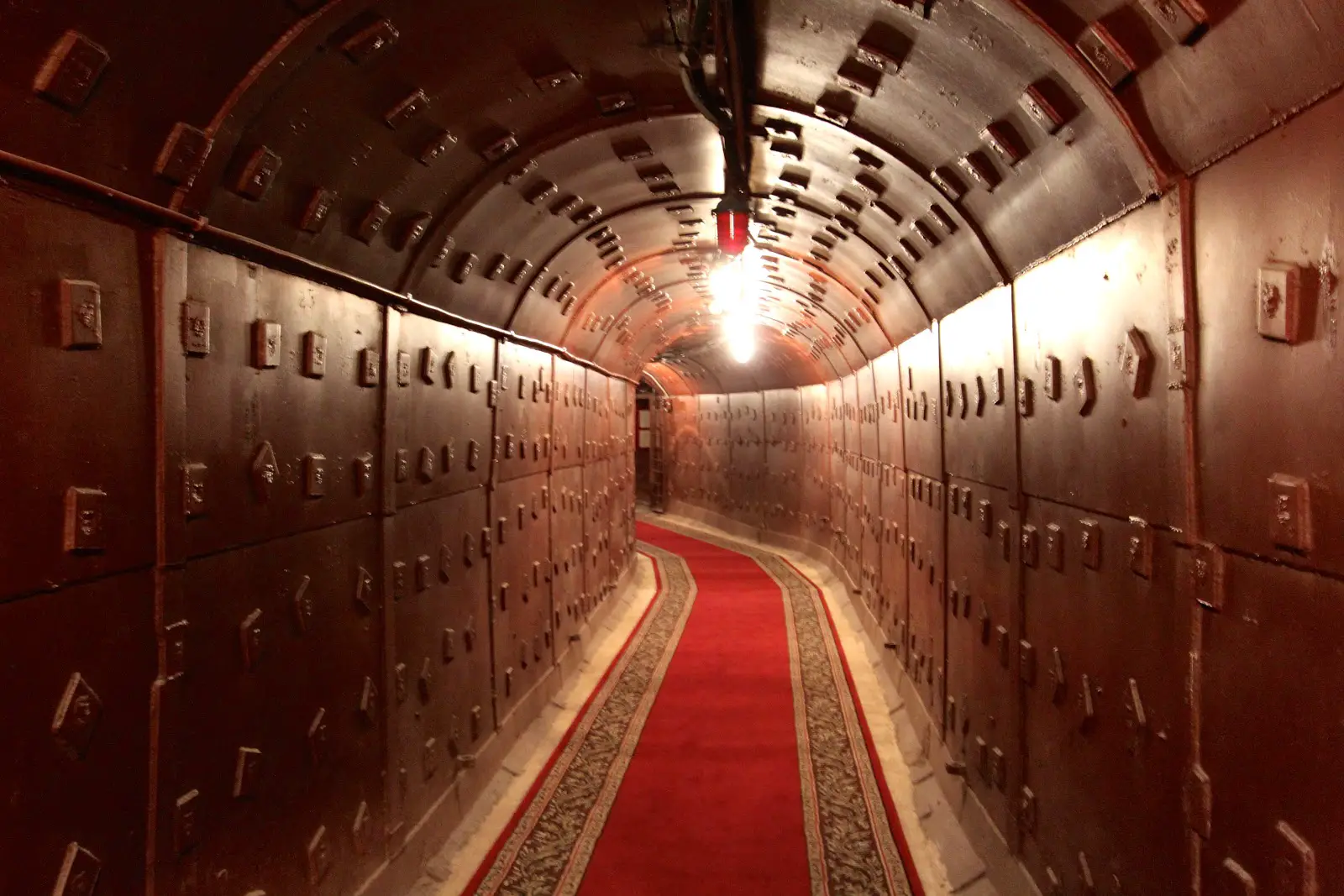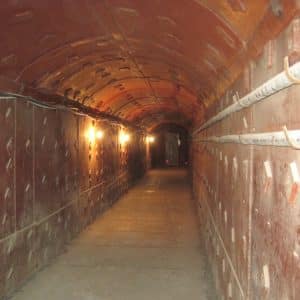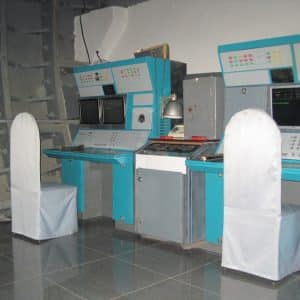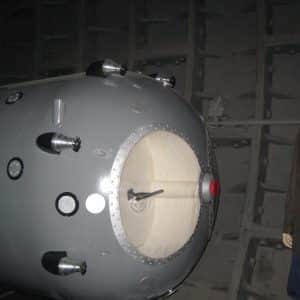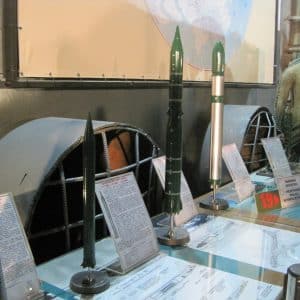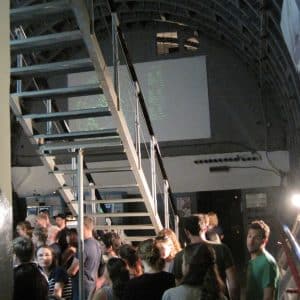Situated sixty-five meters (more than 200 feet) below Moscow’s streets is Bunker 42, also known as “The Secure Command Post ‘Taganskaya,'” a former secret military command center and bomb shelter.
Constructed in the 1950s during the height of the Cold War, it was built to serve as an air-defense communication center in the event of a nuclear attack. Completely functional for the better part of three decades, the bunker is made up of four 150-meter tunnels. As many as 2,500 people could work there on a given day. The complex was also fitted with provisions (food, water, electricity, and air supply) to keep 3,000 people alive for ninety days.
In the 1980s, as the threat of nuclear war faded and the Soviet economy’s ability to support such military endeavors crumbled, the command center fell into disuse. It was finally abandoned in the 1990s upon the demise of the Soviet Union. The facility was acquired in 2006 by a private company which has turned it into a museum center that hosts tours, presentations, and corporate events.
Below are two experiences that SRAS students have had exploring the bunker while on SRAS programs in Moscow.
Katheryn Weaver (Fall, 2017)
Our tour began with a journey, via the stairs, 18 stories underground.
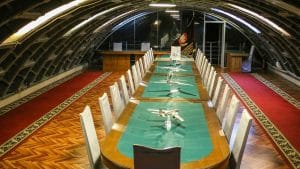
After our descent, we were greeted by a dry-humored guide in a full Soviet-era military uniform. Entry to the museum is only available with a tour group (but you can purchase individual tickets to join a group), and there was a less conspicuous handler in the rear who made sure no one wandered off. There are English-language tours available once to twice a day, but you’ll want to call ahead to find out when they will be on the day you want to attend.
Our guide led us through command centers complete with the (non-functional) computers that would have been used to initiate nuclear warfare, offices and transit corridors. He was incredibly friendly and fully involved with interactive “projects” that made us feel like we were living through the tensest moments of the Cold War. Despite the jokes, antiquated equipment and knowledge that it’s 2017 and mutually assured destruction will (probably) prevent nuclear disaster, the possibility of a nuclear attack feels very real inside Bunker-42.

Throughout the tour, we were not-so-subtly introduced to the theme of Soviet preparedness against American aggression: the US invented the bomb – and is the only country to have actually used it – therefore it was necessary to build a shelter. With different anecdotes about difficulties of the atomic age, and particularly the Cuban Missile Crisis, it’s something of a crash course in the Soviet and the modern Russian perspective of how the Cold War played out. It can be jarring to American sensibilities, if academically fascinating at the same time.
The bunker doesn’t feature any traditional museum “exhibitions,” instead functioning as an exhibition in and of itself. Don’t expect placards, artwork or declassified documents lining the walls — the bunker is just a (really cool, super safe) bunker. After the tour, you’re free to stay underground to dine in the cafeteria, or head back up the stairs to breathe some fresh air (elevators are available for those unable to climb the stairs). This museum is a must-see for anyone interested in experiencing a taste of Soviet mentality during the atomic age.
Sarah Parker (Fall, 2014)
One of my favorite excursions arranged by SRAS as part of our cultural program in Moscow was this dark little surprise, Bunker 42. The exterior is very well marked with a giant red star, but otherwise plain, with no actual sign. We were joking a bit as we arrived, about how we were penetrating the Soviet bunker. We were still joking as we walked down the seemingly endless flights of stairs, marked -7,-8,-9. But we were no longer joking by the time we got to -17. Suddenly the excursion became much more somber, though increasingly absorbing.
They showed us a brief film about the nuclear arms race between the USSR and USA. This would be interesting for anyone, but if you’ve learned any history, it will fascinate you to hear it told from the Soviet side. They show a lot of really terrifying footage of the capabilities of atomic, hydrogen, and mega bombs. The film also touches on the Cuban Missile crisis.
Bunker 42 was meant to have every capability to sustain life in the event of nuclear attack, and those systems are still functional. It was also a military command center, and the museum shows the rooms just as they would be in that capacity. We saw the actual button that would have released a nuclear missile. Also on display were various types of missile design, a model of the entire shelter showing its underground structure, and a lot of the original command center equipment.
They also terrified us with simulations that were at times quite realistic, showing what the nuclear release sequence would have sounded like, or how air-raid drills were performed.
This tour will remind you of the severity and effect of nuclear weapons. At a time when people all over the world casually use belligerent words, Bunker 42 is a great reminder that the Cold War was a fearful and unstable time for both of our countries. It will also renew your determination that we should never go back.
For more information on nuclear issues:
http://en.wikipedia.org/wiki/Nuclear_disarmament
http://www.icanw.org/
http://www.globalzero.org/
Sarah Parker
More Pictures of Bunker 42


